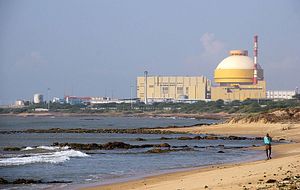Last week, on New Year‘s Day, Wednesday, India and Pakistan successfully completed the 29th consecutive annual exchange of lists of sensitive nuclear installations pursuant to a non-attack agreement between them. Required by the Agreement on the Prohibition of Attack against Nuclear Installations, the lists are understood by each country to be off-limits for attack during any conflict.
The bilateral agreement—the first of its kind between the two South Asian neighbors—was signed on December 31, 1988, before either one had overtly broken out as a nuclear power. It entered into force on January 1, 1991. India and Pakistan both became nuclear powers in May 1998, when India conducted five weaponized nuclear tests and Pakistan conducted six. The initial exchange of lists under the 1988 agreement took place in 1992.
“India and Pakistan today exchanged, through diplomatic channels simultaneously at New Delhi and Islamabad, the list of nuclear installations and facilities covered under the Agreement on the Prohibition of Attack against Nuclear installations between India and Pakistan,” the Indian Ministry of External Affairs noted in a statement.
The agreement does not include specific compliance and verification measures beyond the exchange of lists by both countries. The precise criteria for what may be included and excluded on these lists is not specified; it is generally assumed that the list of nuclear-related facilities is unlikely to be exhaustive, given incentives for both New Delhi and Islamabad to conceal certain facilities relevant to their respective nuclear weapon programs.
The agreement covers facilities including “nuclear power and research reactors, fuel fabrication, uranium enrichment, isotopes separation and reprocessing facilities as well as any other installations with fresh or irradiated nuclear fuel and materials in any form and establishments storing significant quantities of radioactive materials.”
“Works or installations containing dangerous forces, namely dams, dykes and nuclear electrical generating stations, shall not be made the object of attack, even where these objects are military objectives, if such attack may cause the release of dangerous forces and consequent severe losses among the civilian population,” the agreement further states.
The 2020 exchange of lists followed a tense year in bilateral relations between India and Pakistan. In February 2019, the two countries sparred in a major skirmish after the Indian Air Force struck what the Indian government said was a terrorist camp on Pakistani soil. The Pakistani Air Force retaliated, but the crisis did not escalate after the capture of a downed Indian pilot by the Pakistani side.
In the second of 2019, tensions between India and Pakistan remained high amid sharp criticism from Islamabad of the Indian government’s decision to change the internal status of the erstwhile state of Jammu and Kashmir by bifurcating it into two centrally administered union territories.






























